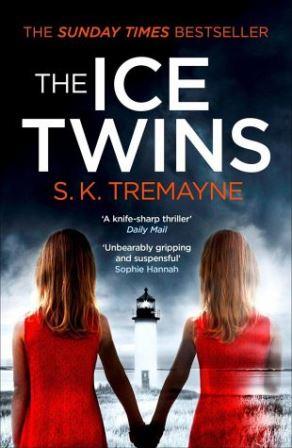
Twins are fascinating. None more so than identical twins.
How they relate to each other, how they relate to other people, even how you can tell them apart: these are all rich sources of material for a writer, but S. K. Tremayne’s gothically charged novel starts from the end in a sense by exploring the tensions inherent in one twin relationship after the loss of a twin.
What’s it about?
Fourteen months ago, Lydia Moorcroft died in an accident. Now her devastated parents, Sarah and Angus, move with their dog, Beany, and surviving twin, Kirstie, to a remote Scottish Island. (Handily, Angus’ grandmother has left him the island as a bequest in a will. As you do.)Â Their hopes of a fresh start dim when Kirstie declares that she is actually Lydia. Her parents know that one of their completely identical daughters died. But do they know which one? As Kirstie/Lydia’s identity shifts and confuses, the gaping cracks in her parents’ relationship become wide enough that a person could fall through them, and on isolated Torran, no-one would hear their cries for help…
What’s it like?
Creepy. Ambiguous. Filled to the brim with guilt. Sarah’s readiness to believe that they have identified the ‘wrong’ twin as living for the last fourteen months is strange, especially as it is initially based on one statement made on one evening. Gradually she starts to collate ‘evidence’: the dogs’ responses to the twins; a shift in academic abilities; and a favourite toy that’s been recovered from Lydia’s boxed-up belongings. It’s easy to believe that this could simply be wish-fulfilment: Lydia was Sarah’s favourite out of the twins, after all. Does she simply want her favourite back? Is Kirstie just trying to please her deeply distressed mother?
Then the narrative shifts to reveal Angus’ perspective and the level of threat increases exponentially. Angus is pleased that, ‘On Torran they would be safe at last. No one would ask questions. No interfering neighbours. No friends and relatives. No police.’ What exactly is he afraid of? What happened to Lydia? And why does he seem to hate his wife?
The sense of threat is heightened again by the move to Torran. Angus wonders how many people drown each year trying to cross the flats, concluding that it’s still safer than London. Readers may feel otherwise! In this deeply unsettling environment, in a cottage that’s definitely breaking down rather than simply ramshackle, Angus becomes a potential Jack Torrance, (is it a coincidence that he lives on Torran?) and Sarah becomes increasingly convinced that he is hiding something terrible from her. Meanwhile, Lydia’s attempts to make friends suffer from Kirstie’s continued presence…
Final thoughts
I loved the creepiness, the uncertainty and the harsh environment. Sarah tries to paint over murals left by squatters on the cottage walls, but as nature continues its assault on their little corner of the world, the murals come back. Defiant. Daring Sarah to face them. And the truth will do the same. (Though I wonder whether some feminists might criticise the ‘truth’ that is finally revealed; arguably, a woman is harshly punished for acting in defiance of traditional roles.)
I was annoyed by the insistent use of colons. ‘The wine came: plentifully.’ ‘The anger rises inside me: like fire.’ Etc. There are a million examples like this, presumably intended to create a more dramatic tone and mood, but their prevalence irritated me, especially as the vast majority were unnecessary, and they detracted my attention from the story.
The story dips into supernatural territory throughout, but there’s always an alternative, rational explanation available, which I liked. In fact, the disturbing ending is even more chilling if you discount the possible supernatural explanation, which I prefer to do.
Genuinely gripping, disturbing and a compulsive page turner, this kept me awake til 3am one night.